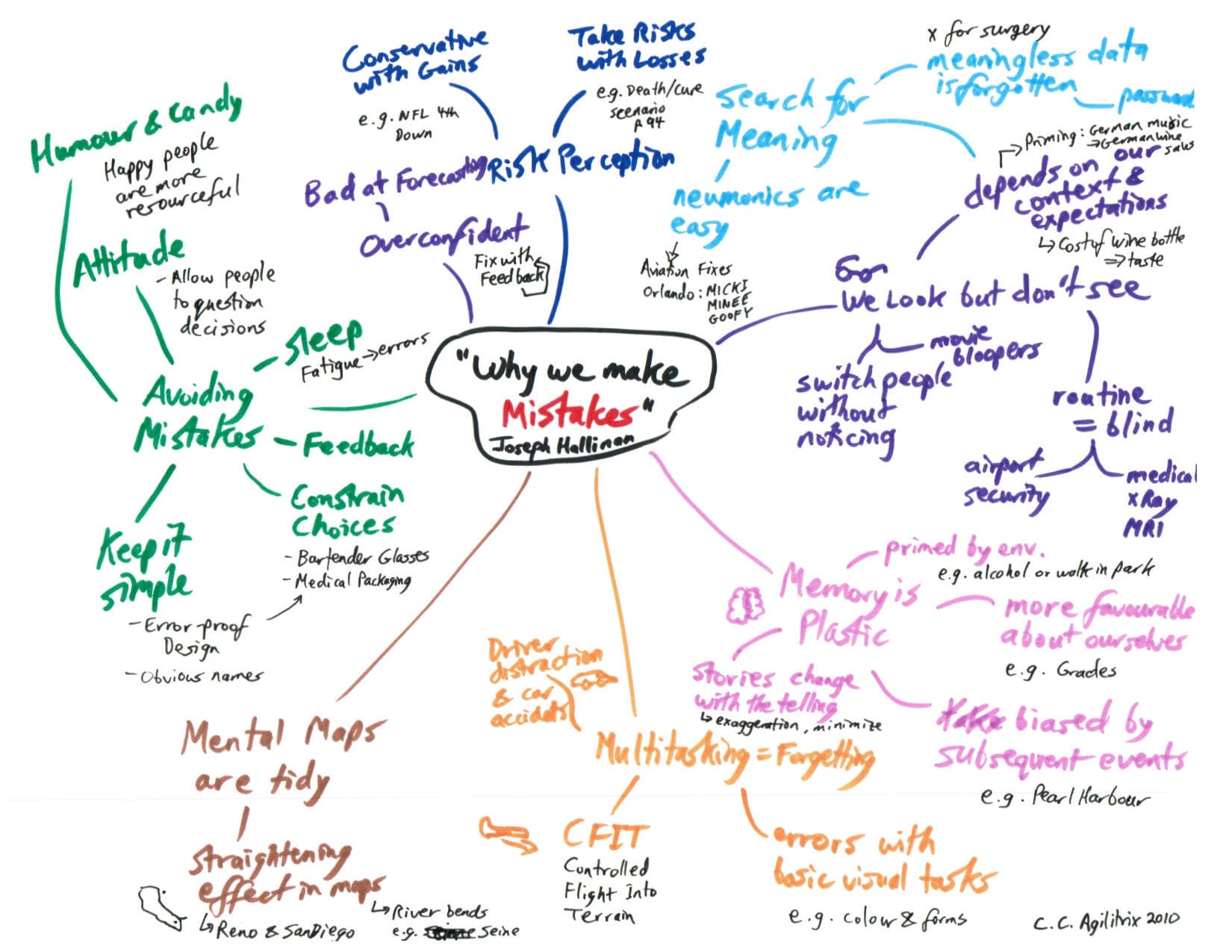One of my goals is to make a mindmap of every book that I read. I figure if I can take the time to read it, I may as well take a little time to synthesize the content of the book into a mindmap so I can remember it later. Seems like a good idea, and this is the first one in what I hope will be a long and informative series.
So, today’s review is on Why We Make Mistakes – a book that describes failure modes common to people. Many of my regular readers will be wondering what this has to do with Agile and Lean, but it turns out that there are several direct links to industry practices.
Please review the mindmap below. The left half relates to how Agile works to avoid making mistakes. The right half of the mindmap has to do with proving out NLP presuppositions such as “perceived reality depends on our model of the world” and “memory is a synthetic process”.

Multi-tasking = Forgetting
I love the term CFIT = Controlled Flight Into Terrain. They had to make up a name for when pilots aren’t paying attention and fly into the ground because it happens. The reason is the same as many car accidents – driver/pilot inattention. The main point is that our brains are designed to do one thing at a time. In Agile and Lean we see a clear focus on one task at a time. Kanban and Scrumboards enforce this.
Keep it simple and constrain choices
In Agile we use automated unit and acceptance testing as well as test-driven development and refactoring to keep things simple. In Lean we use poka-yoke to mistake-proof a production step. These are good things since people make mistakes. Even worse, if we routinely don’t see problem, we are unlikely to see them when they do happen (we look but we don’t see).
People are overconfident
I have seen this with a lot of technical teams – overpromising what can be delivered. Fortunately, there is an easy fix – feedback. Accurately measuring a team’s velocity (only counting fully completed stories) will provide very clear feedback on progress that is visible to all.
Attitude
A lot of Agile teams promote an open culture where people are encouraged to question and discuss things. This is critical for avoiding catastrophes.
Humour & Candy
A final point to consider is that happy people are more resourceful – so consider candy and a dose of humour for your Agile team.
Sleep
A key practice in Agile is sustainable pace or energized work. Lean equivalent is avoiding the wastes of muri (overburden) and mura (unevenness).


